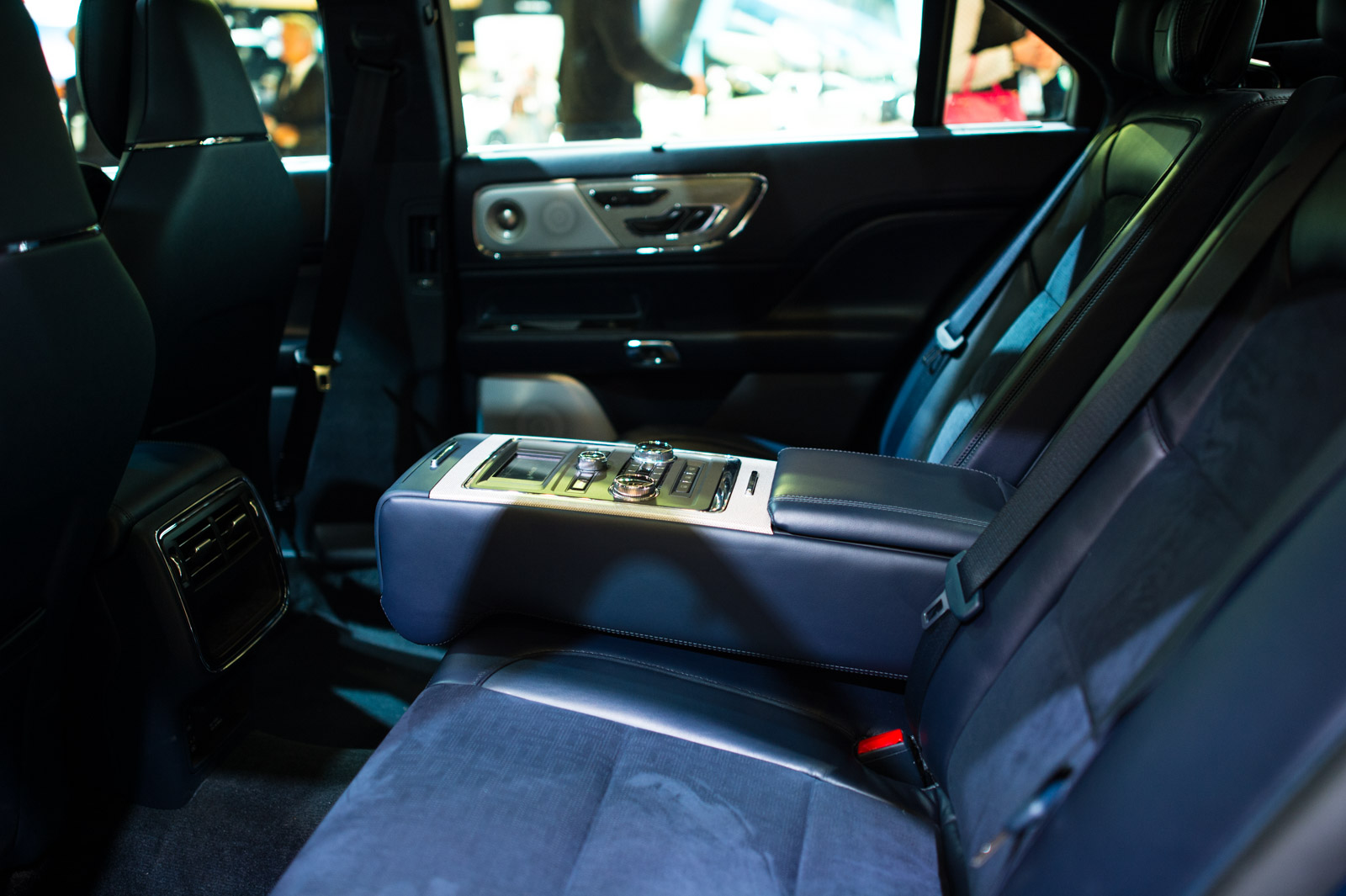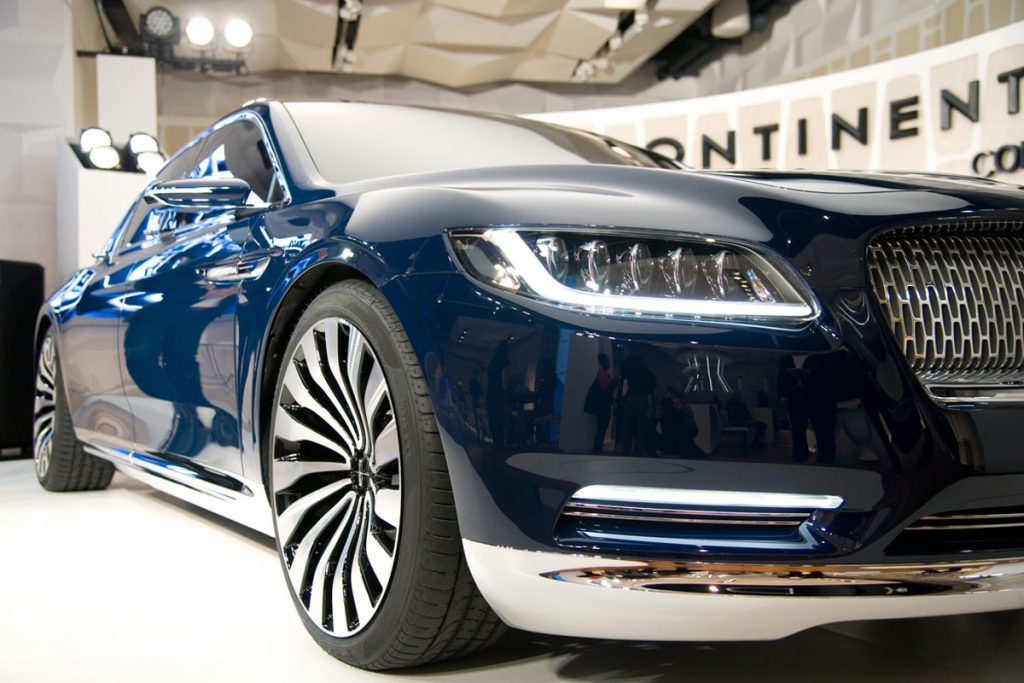Lincoln’s Director of Design David Woodhouse on the 2017 Continental
Relaunching a flagship product with quiet elegance

Less than a year after we previewed Lincoln’s Continental concept, the brand announced that they’re bringing the full-sized sedan to the market in fall 2016. It’s a long awaited return of the flagship Continental nameplate and carries as indicated much of what we loved about the concept. Along with its new signature grille there are huge steps forward in the brand’s overall design language, with special attention paid to the interior. The Continental comes to life in the higher specs, with 30-way power seats, higher end finishes, its class-defining Revel audio system and a calm, cosseted cabin; it’s arguably less compelling when stripped down. David Woodhouse, Lincoln’s Director for more than the past two years and a driving force of the brand’s quiet luxury motto, took us through his favorite elements of the Continental during NAIAS (aka the Detroit Motor Show).

“We presented the concept in New York last April. This is the visual receipt of that car, in reality. We had a lot of key features on that car, and things we exaggerated,” Woodhouse begins. “What I am most proud of is how the design team worked with the product development and engineering teams to deliver them in reality.” Woodhouse makes note that the new face of Lincoln, an identity shift that they also presented in New York, is a key ingredient to the vehicle, and that everything is about matching form and function.

There is perhaps no clearer example than the doorhandles on the 2017 Continental, which also carried over from the concept. The chrome of the handle blends seamlessly into the window frame, and in fact, the handles themselves don’t move. Only the door pulls outward using an “e-link” technology. “It was an engineering, functionally-lead feature but then design made this lovely signature element out of it, integrating it into the belt line. From our perspective, it creates a beautifully clean body side, bereft of those holes and handles,” Woodhouse shares. Another perk: these handles require very little physical effort to operate—they open easily and close automatically when directed.

“We take ehe mantra of quiet luxury so seriously as a team. We take that method and approach to everything,” he says. “The overall volume and stance of the car,” also carries value according to Woodhouse. “The proportion, its low trunk and tail, is so important in setting up the gesture of the car. It’s the gesture we want to convey for the D (full size) segment.” With a low, wide tail, there’s definitely a unique physical appearance. But stepping inward, it becomes evident that the interior—spacious, even in the back—conveys luxury.

“In New York last year, we focused on the second row and invited people to get in and try it,” he furthers. “The first thing is the seats. We call them the perfect position seats. It’s a 30-way seat.” The seats were developed internally and Lincoln holds about fifty patents on them. “There’s a split cushion for the legs in the back, so each leg can have a different position. Further, the back ones recline and are heated.” There’s also a substantial amenities pack accessible from the back, which allows (among other things) moving the front passenger seat away if it’s unoccupied. While standard on many larger luxury sedans it’s a first for the brand and a testament to the importance of this car in the Chinese market, where many customers make purchasing decisions based on how comfortable it is to be driven while sitting in the rear seat.

As for visual details, the interior features an array of upgraded leathers and open pore woods. Another uncommon material—suede—has been utilized as well, and to a refined degree. “It’s traditional in a way, but bright,” Woodhouse explains, but “the whole design has been around getting the right aesthetic and feeling. We didn’t want to be too classical and we didn’t want to be too avant-garde or scare people away.” There is a confidence but it is conveyed subtly. Though, the “rhapsody blue” interior is less subtle. A new signature color, it references luxury automotive interiors of the ’50s but offers a distinct, powerful tone. The car really shines in delivering its “quiet luxury” mantra with this package.

The 2017 Continental is a new high water mark for the brand, something Woodhouse is quick to acknowledge, as well. “If we didn’t feel confident about the future of this brand, we wouldn’t be bringing the Continental back. We feel proud about where we are going,” he concludes. Much of the details within require repeat viewings, revealing further nuance each time. But stepping away from it all, the volume and stance of the automobile does set the maturity of the design. The volume feels substantial, but not overdone—and everything inside supports the advancement. We’re very excited to see the new Lincoln product line take shape. The recent refresh of the smaller MKZ, which we also recently spoke with Woodhouse about, further solidifies the brand’s efforts. We’re looking forward to Lincoln’s next steps in their journey of revitalizing the brand.
Images by Josh Rubin












